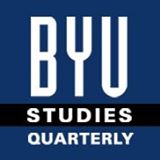BYU Studies

Keywords
Mormon studies, religious education, Brigham Young University, Franklin S. Harris
Abstract
Education is deeply embedded in the theology and religion of The Church of Jesus Christ of Latter-day Saints. Formal educational systems began to develop soon after the establishment of the Church in 1830. The first of these formal systems was the School of the Prophets, established in Kirtland, Ohio, in December 1832 to prepare selected members for missionary work. Nearly a decade later an attempt was made to establish a university in Nauvoo, Illinois. After the move to Utah, the Church continued its involvement in formal education with the establishment of “common schools, stake academies, and colleges and universities.” The curriculum of these early frontier schools was heavily influenced by Church attitudes and teachings. To the growing non-LDS population in Utah this intermixing of religion and education was offensive, and Utah education became a source of conflict as each group sought to influence the educational curriculum. This conflict influenced Church leaders to “organize experimental church schools” to educate the youth of the Church. This experiment assumed more urgency with the passage of the Edmunds-Tucker Act in 1887. The Edmunds-Tucker Act accelerated the growing “secularization of the public schools.” This, in turn, led the Church to expand its network of stake academies and colleges and begin investigating the need for a vehicle to deliver religious education to those LDS children attending public schools.
Recommended Citation
Daines, J. Gordon III
(2006)
"Charting the Future of Brigham Young University: Franklin S. Harris and the Changing Landscape of the Church's Educational Network, 1921-1926,"
BYU Studies: Vol. 45:
Iss.
4, Article 5.
Available at:
https://scholarsarchive.byu.edu/byusq/vol45/iss4/5
